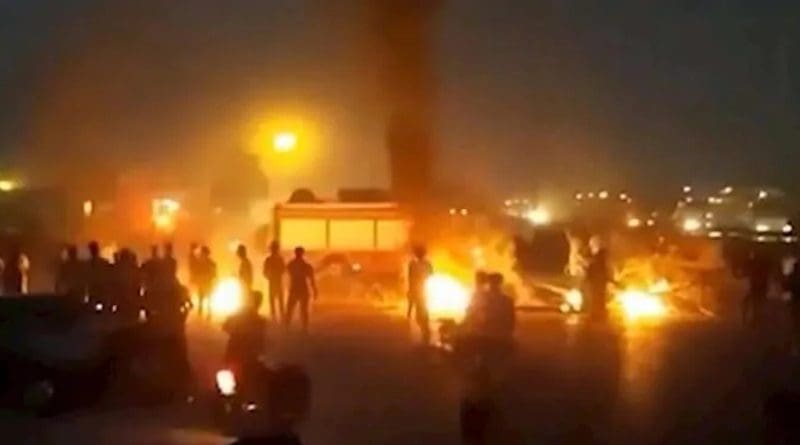Iran Experienced 3,719 Protests In July
According to collected reports by sources affiliated with the Iranian Resistance in July, there were at least 3,719 recorded protests. This is almost five times more than the number of protests in June when 765 protests were recorded.
Most of the protests in July were from the Khuzestan water protests which started on July 15. The water protests amounted to 197 protests held in 73 cities, and from the oil industry workers who held 3,226 protests in 44 cities. Other sectors held 296 protests in 44 cities.
Khuzestan water protests
The nightly Khuzestan water protests started on July 15 and continued for two weeks across the country. There were 197 protests recorded in 73 cities and 21 provinces. Security forces resorted to lethal force, using live bullets, pellet guns, and tear gas to crush protesters. Reports also indicated that the regime disrupted cellphone internet connectivity in Khuzestan.
Many were detained in the past two weeks amid the protests or later in nightly house raids. They were transferred to unknown locations. The number of detainees amounted to at least 1000, according to unconfirmed reports. There were 13 protesters killed by security forces whose identities were verified.
Oil workers’ strike
Workers from refineries, petrochemical industries, power plants, and facilities related to the oil industry went on strike on June 20. The campaign was dubbed “campaign 1400”, with reference to the Iranian calendar year. The oil workers demanded higher wages, delayed wages, and 10 days of leave for every 20 days of work.
In July, their protests amounted to 3,326 strikes in 44 cities in 17 provinces.
Workers
Workers staged 94 protest gatherings in 35 cities in July. Their economic grievances included months of delayed paychecks, the shutdown of factories, layoffs, the decrease of their wages, no plans for their COVID-19 vaccinations, and non-sanitary working conditions, among others.
Protesting workers included municipality workers, railway workers, petrochemical workers, miners, and others.
Pensioners
Pensioners held 21 protests in 10 cities in July. They demanded higher pensions, which are currently below the poverty line.
Farmers
Farmers gathered for 17 protests in seven cities in July. They protested the lack of water, a ban on planting certain crops, not receiving financial compensation for the drought, constant power cutoffs, and other economic problems. The farmers in Isfahan central Iran protested the usage of the Zayanderud River by the industries affiliated with the IRGC and the government.
Livestock farmers
Livestock farmers staged 14 protest gatherings in 11 cities in July. They protested water shortages, the low price of their products and high prices of feed, negligence of the state to their problems, among other economic grievances.
Teachers
Teachers gathered for five protests in two cities in July. They protested their employment status and demanded official jobs.
Other sectors and prisoners
Other sectors held 128 protest gatherings in 78 cities in July. These included protests of blackouts, water shortages, among other economic problems.
The family members of slain protesters gathered to seek justice for their slain children in Tehran. Locals in Baneh, northwestern Iran protested the killings of border porters or kolbars by the regime’s security forces.
Prisoners held 2 hunger strikes in July.

